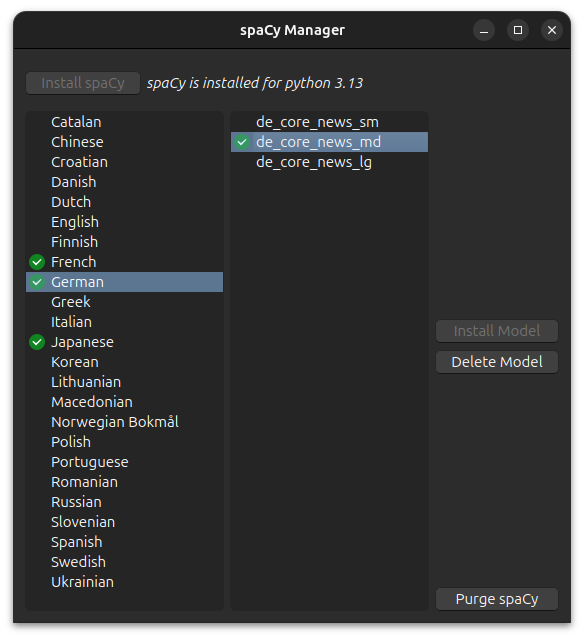Installing spaCy
From the Anki Tools menu, navigate to AnkiMorphs -> spaCy Manager

which will take you to the spaCy manager window:

-
Installing spaCy:
Note: spaCy is specific to the Python version it was installed for; a version built for Python 3.9 will not work with Python 3.10, and vice versa.
When you click install, spaCy will automatically be downloaded and installed into a dedicated folder (virtual environment), which can be found here:
- Windows:
%APPDATA%\Anki2\addons21\spacy-venv-python-<version> - macOS:
~/Library/Application Support/Anki2/addons21/spacy-venv-python-<version> - Linux:
~/.local/share/Anki2/addons21/spacy-venv-python-<version>
After the installation is complete you have to restart Anki before you can install any models.
- Windows:
-
Install Model:
Note: The models are stored in the virtual environment folder.
There are usually three different types of models (morphemizers) to choose from for each language, each with their distinct suffixes:
- sm (small model): ~10–50 MB
- md (medium model): ~50–150 MB
- lg (large model): ~500 MB+
Larger models are slower, but they might produce better results.
-
Delete Model:
Deletes the model from the virtual environment folder. -
Purge spaCy
Removes the entire virtual environment folder, removing both spaCy and its models.